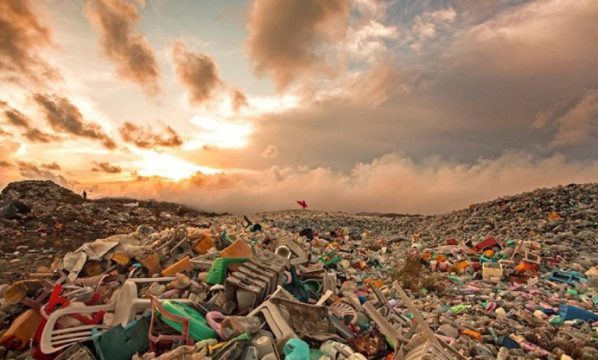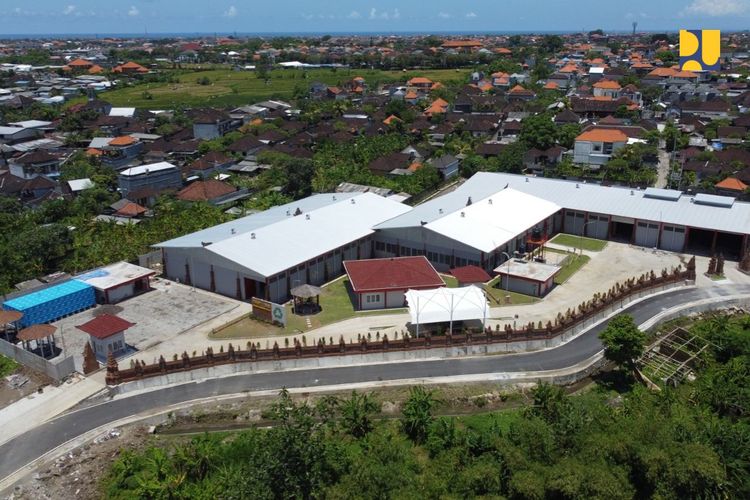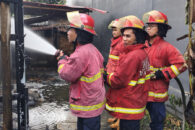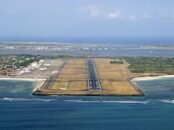Bali’s capital city, Denpasar, continues to struggle to find an effective and coordinated way to handle the many tons of trash the Island generates daily. Denpasar has built three modern Waste Disposal Plants (TPST) that are far behind their scheduled opening dates and running at reduced capacity.
The TPST, located in the East Denpasar suburb of Kesiman Kertalanggu, has been the focus of strong protests from surrounding communities for emitting noxious odors. Residents have erected billboards protesting the plant and demanding the government take urgent corrective actions.
As reported by RadarBali.com, Professor IGB Wijaya Kusuma, an academic from the Udayana University Technical Faculty, has surveyed the TPST facility in Kertalanggu that President Widodo formally inaugurated in March 2023.
During the inspection survey, Professor Wijaya determined that the TPST Facility did not meet acknowledged hygiene standards due to poor internal ventilation and the uncontrolled expulsion of unpleasant odors into the surrounding community.
To remedy the situation, Professor Wijaya recommends that the Kesiman Kertalanggu TPST’s roof be equipped with an exhaust blower to ventilate into the air outside the building. The Professor continued: “Then, the contaminated air must run through a purifying device to eliminate the pungent odors. After passing through the purifying device, the air quality will be brought up to an international standard, allowing release into the atmosphere.”

Technically, the drying process at the Kesiman Kertalangu TPST uses a rotary dryer that requires some 2 hours to achieve a water moisture content of 40 percent and 4 hours to achieve a water content of 10 percent.
Based on data from Professor Wijaya, one rotary dryer configured to reduce moisture to 40 percent can only dry 9 tons per cycle. When operating for 18 hours in a single 24-hour period, 81 tons of wet garbage can be processed daily. “Meanwhile, for 10 percent water content, the machinery can only dry 9 tons times four cycles per day (36 tons),” said the Professor.
Thus, the two rotary dryers at the Kesiman Kertalangu TPST can only dry 120 tons per day against a contracted target of 450 tons. To meet these targets, the necessary space and equipment need to be expanded four.
Professor Wijaya blames the foul odor coming from TPST Kesiman Kertalanggu on the under-capacity of drying machines and the resulting accumulation of unprocessed waste beyond the 120 tons now being handled each day.
In other words, the TPST Kesiman Kertalanggu operates at 25% of the capacity needed to process the 450 tons of trash that comes in daily.
When recently interviewed with the Acting Governor of Bali, Sang Made Mahendra Jaya, Professor Wijaya stated that to eradicate the mountains of garbage at the Suwung TPA, the Bali Provincial Government (Pemprov) has appointed the regional company SBDJ (Sarana Bali Dwipa Jaya) to work together with investors to solve the growing garbage problem in Bali with Wise Energy. The plan is to build a waste-powered electricity plant and an incinerator.
The Acting Governor‘s ambition is to create technology to solve garbage with the same efficiency as Singapore.
Related Links
Bali’s Failed TPST Plants Face Daily Fines
Something’s Smelling Rotten in South Bali
Lingering Odor: Bali TPST Plants Off-Line
Raising a Stink Over Waste Disposal in Bali
Bali Waste Disposal Plants Underperforming
Bali Waste Processing Plague by Problems
TPST-Kertalanggu Bali: The Odor Lingers On
Stay Informed on Bali Tourism-Related News: Subscribe to Bali Update






